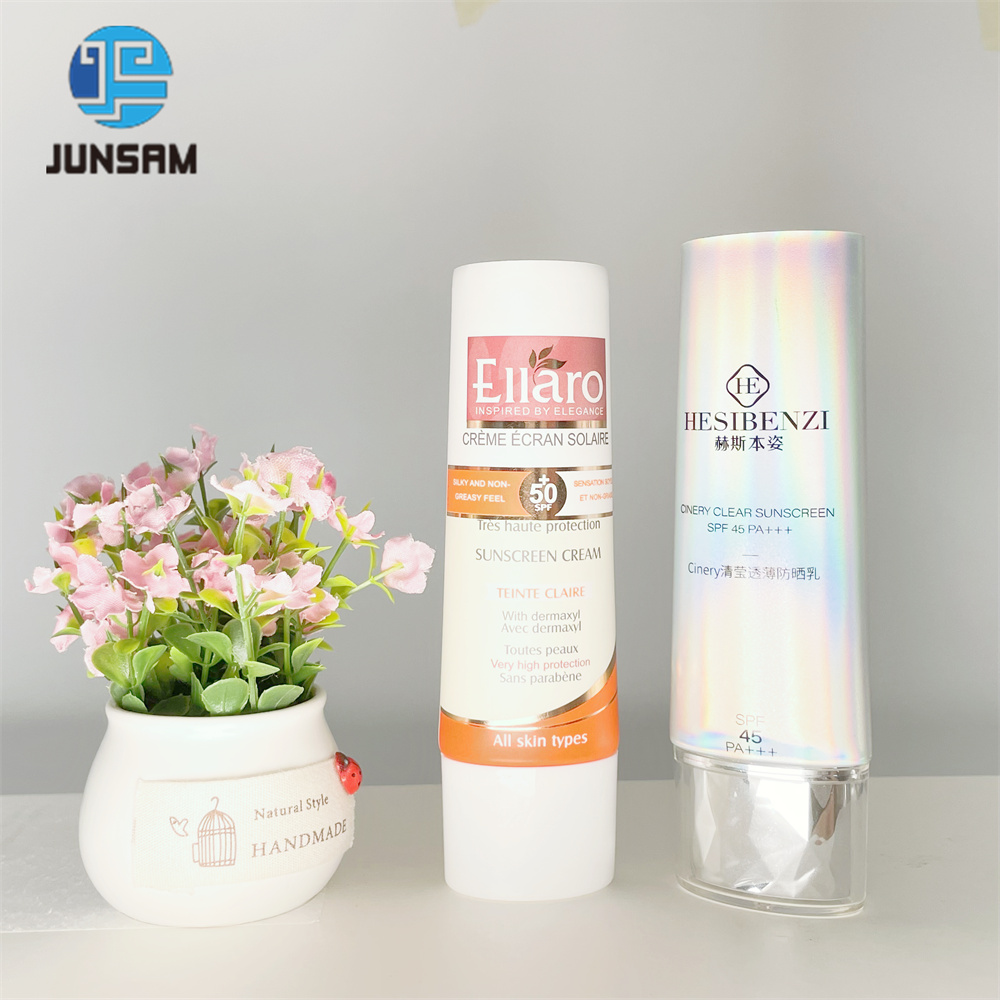Cosmetic packaging tube is more than just a container for products; it serves as a vital facet of brand identity, user experience, and product preservation. Cosmetic tubes have emerged as a popular choice among various packaging options due to their aesthetic appeal and functional benefits. Let’s delve into the key design elements that make cosmetic tubes an excellent packaging solution for beauty brands.
Material Selection Available for Cosmetic Packaging Tube
The foundation of a successful cosmetic tube design lies in the choice of material. The two most common materials used are plastic and aluminum. Each has its own set of benefits and limitations, which cater to different types of products and brand philosophies.
Plastic Tubes
- Flexibility and Durability: Plastic tubes are highly flexible and can withstand rough handling without deforming.
- Cost-Effective: They are generally less expensive to produce and purchase in bulk, making them an economical choice for mass-market products.
- Customization: Plastic allows for various colors, finishes, and printing options, enhancing the product’s visual appeal.
Aluminum Tubes
- Barrier Properties: Aluminum tubes protect against light, air, and contaminants, ensuring product integrity.
- Eco-Friendly: Made from 99.7% aluminum purity slug, these are fully recyclable and contribute to a brand’s sustainability goals.
- Luxury Appeal: The sleek and metallic finish of aluminum tubes often conveys a high-end product image.
Shape and Size
The shape and size of the tube are crucial in determining the ease of use and the overall customer experience. Brands often tailor these aspects to complement the specific needs of their product and consumer preferences.
Standard Shapes
- Cylindrical: The most common shape that is easy to manufacture and handle.
- Oval: Provides a more ergonomic grip and can stand out on the shelves.
Custom Sizes
- Travel Size: Small, portable tubes are ideal for on-the-go consumers.
- Economy Size: Larger tubes often give a sense of value and longevity of use.
Shape and size customization are vital for meeting the product’s specific storage, usage, and aesthetic needs.
Closure Types for the Cosmetic Packaging Tube
The closure plays a significant role in cosmetic tubes’ functionality and user experience. Different types of closures are suitable for different product formulations and end uses.
Common Closures
- Flip-Top Caps: Easy to use, especially with one hand, and ideal for products like lotions and gels.
- Twist-Off Caps: Provides a secure closure for products that require longer shelf life or are prone to leakage.
- Pump Dispensers: Often used for high-viscosity products like creams and serums, offering precise dosage and hygiene.
Selecting the appropriate closure type ensures convenience, safety, and product longevity.
Dispensing Mechanism
The dispensing mechanism is an essential aspect that directly affects product application and customer satisfaction. The design should ensure that the product is dispensed efficiently and hygienically.
Dispensing Options
- Nozzle Tips: Perfect for targeted applications, like acne treatments or eye creams.
- Roller Balls: Often used for anti-aging products and serums, providing a massaging effect during application.
- Brush Tips: Ideal for makeup products like lip glosses or concealers, offering precision and ease of use.
The choice of dispensing mechanism should match the product’s consistency and intended use.
Printing and Branding
The visual appeal of cosmetic tube packaging is paramount in attracting customers and conveying brand values. Advanced printing and branding techniques help create a distinct and memorable packaging design.
Printing Techniques for the Cosmetic Packaging Tube
- Silk Screen Printing: Provides vivid, durable prints resistant to smudging and fading.
- Digital Printing: Ideal for detailed and high-resolution images, allowing for customization and intricate designs.
- Hot Stamping: Adds a luxurious touch with metallic effects, enhancing the premium feel of the product.
Branding elements like logos, taglines, and color schemes should be strategically placed to enhance brand recognition and appeal.
Environmental Impact
With the rising consumer demand for eco-friendly products, the sustainability of cosmetic tubes is a crucial design consideration. Brands are increasingly adopting materials and practices that minimize environmental impact.
Sustainable Practices
- Recyclable Materials: Use plastics that are easily recyclable, or opt for aluminum tubes, which are 100% recyclable.
- Post-Consumer Recycled (PCR) Content: Incorporating PCR materials in production reduces waste and promotes a circular economy.
- Biodegradable Options: Exploring innovations in biodegradable plastics that decompose naturally, reducing environmental footprint.
Highlighting these sustainable efforts on the packaging can attract eco-conscious consumers and enhance the brand’s green image.
User Interaction and Ergonomics
Ensuring the packaging is user-friendly and ergonomically designed can significantly enhance the overall consumer experience.
Ergonomic Design
- Grip: Incorporating textures or shapes that fit comfortably in the hand to prevent slipping during use.
- Squeezability: Ensuring the tube is not too stiff, making it easy to dispense the product without much effort.
A focus on ergonomic design can make the product more appealing and practical, encouraging repeat purchases.
Innovation and Trends
Staying updated with the latest packaging trends and innovations can help a brand stay ahead in the competitive market.
Current Trends of Cosmetic Packaging Tube
- Smart Packaging: Integrating QR codes or NFC tags for interactive consumer engagement.
- Minimalist Design: Clean and simple designs that convey a sense of sophistication and modernity.
- Custom Shapes and Designs: Investing in unique tube shapes and standout designs to differentiate products on the shelves.
Keeping an eye on trends and adapting to innovations can keep a brand relevant and attractive to consumers.
Conclusion
The design elements of cosmetic tube packaging are multifaceted, involving a careful balance between aesthetics, functionality, and sustainability. From material selection to innovative dispensing mechanisms, every detail plays a crucial role in determining the product’s success in the market. By focusing on these key design elements, brands can create packaging that protects and preserves their products, resonates with consumers, and reflects their brand’s values. Cosmetic tubes offer a versatile and effective solution that can meet the diverse needs of the beauty industry, ensuring that brands stay competitive and appealing to their target demographics.


